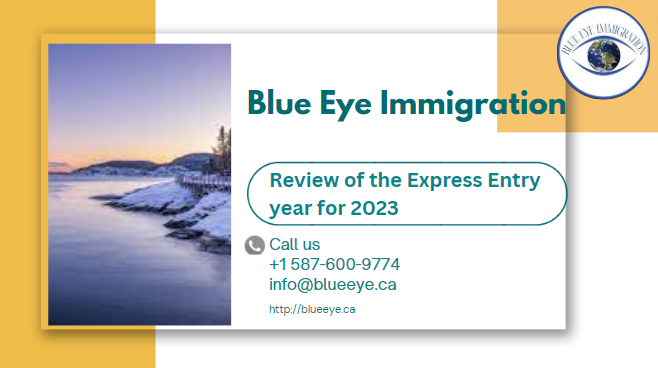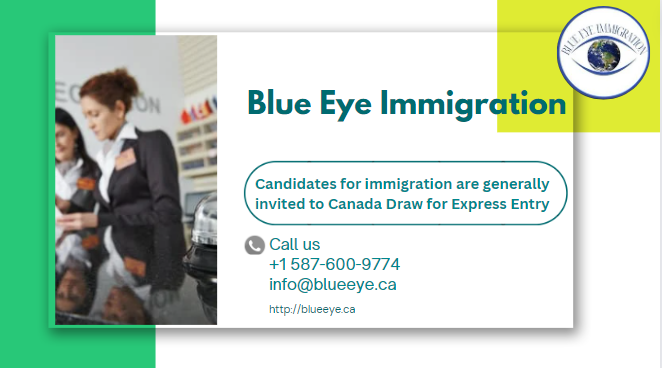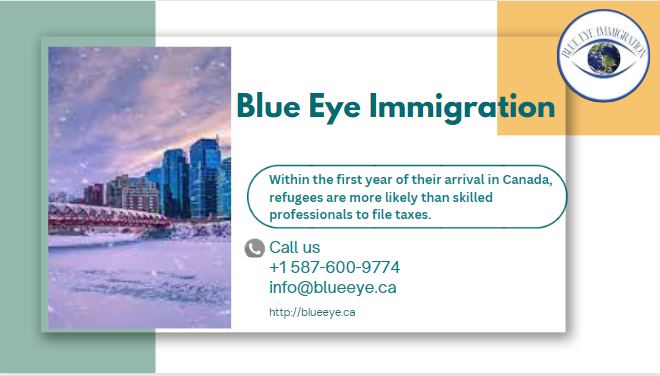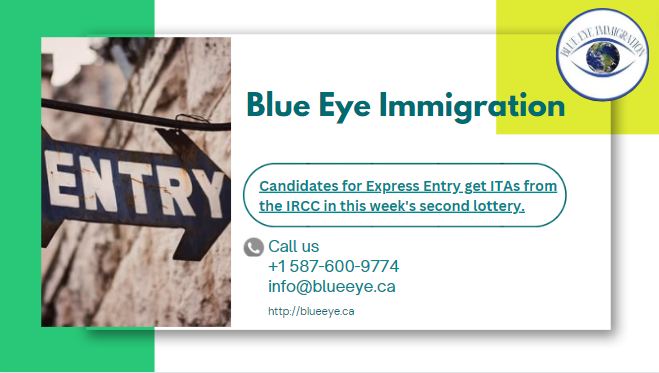The Express Entry application management system in Canada has undergone considerable revisions as of 2023.
Following the 18-month break in Express Entry drawings, many of the patterns set in 2022 were still in place in the first part of 2023. Draws were made for the entire program, only for the Provincial Nominee Program, or, in one case, just for Federal Skilled Workers.
Draws happened every two weeks on average, but occasionally they happened more regularly. Notably, in March 2023, Immigration, Refugees and Citizenship Canada (IRCC) invited over 21,000 applicants for Express Entry in four drawings. the second-highest monthly invitation total for Express Entry hopefuls ever.
Invitation-only rounds of selection based on categories
Six new Express Entry draw categories were launched by the IRCC in May. This was anticipated in light of the June 2022 amendment to the Immigrant and Refugee Protection Act (IRPA) that gives the immigration minister the power to grant ITAs to applicants based on certain qualifications rather than a high CRS score in its whole.
The IRCC’s missions to promote French outside of Quebec and use immigration to bolster Canada’s labor force and economy are being met in part by the applicants who fall under the new categories. These are the categories:
- Healthcare
- Science, technology, engineering, and mathematics (STEM) professions
- Trades, such as carpenters, plumbers, and contractors
- Transport
- Agriculture and agri-food
- Strong French proficiency
On June 28, the first category-based draw was held, inviting 500 healthcare professionals to submit applications. Since then, the IRCC has selected candidates for Express Entry based on categories and invited almost 16,000 of them.
Sketch types
Most of the 42 drawings in 2023 were all-program draws, meaning that applicants from the Canadian Experience Class, Federal Skilled Trades Program, and Federal Skilled Worker Program were taken into consideration. But in 2023, the IRCC did not provide any ITAs to applicants for the FSTP.
Nineteen Express Entry drawings were all-program, five were restricted to PNP, one to FSWP, and the remaining seventeen were based on category selection.
CRS Ratings
According to recent IRCC statistics, the majority of Express Entry applicants who were granted an ITA between January and September 2023 had CRS scores ranging from 501 to 600, with the majority having scores between 451 and 500 (26,070).
12,590 more people received CRS scores ranging from 900 to 1,200, which is the highest attainable number. These were most likely candidates who had been nominated via the PNP, which raises a candidate’s CRS score by 600 points.
The lowest CRS for an all-program draw, based on draw type, was 481 on March 29, when 7,000 applicants were given ITAs. On December 6, when 4,750 applicants from around the program obtained ITAs, the highest number was 561.
In drawings for Provincial Nominee Program-only candidates, the highest CRS score among ITA-receiving candidates was 791 on February 15 in a draw for 699 applicants. On May 10, in a draw for 589 PNP candidates, the lowest score was 691.
On February 2, there was a single draw for 3,300 applicants seeking Federal Skilled Workers with a CRS of at least 489.
With a score of 354 on September 28, applicants in the single draw for agricultural and agri-food vocations had the lowest score among category-based selection rounds of invites. 600 individuals were asked to apply by IRCC.
This year, there were two instances of the highest category-based score. ITAs were sent to 500 applicants in STEM fields who scored at least 486 on July 5. On October 25, ITAs were awarded to 300 candidates who met the same minimal score in a draw for French language proficiency.
Regularity of Drawings
Express Entry drawings were held every two weeks, and occasionally every week, between January and June.
When category-based selection drawings were used, it became increasingly challenging to forecast when the IRCC would issue ITAs. But according to ministerial directives, there has been a tendency since July of having one week per month with three or four different Express Entry lotteries between Tuesday and Thursday.
There were seven drawings between December 6 and December 21 in December, which was the greatest volume of draws. From July 4 to July 12, there were five draws with the second-highest volume. There were four draws in October and five draws in two weeks in September as well. Once more, all three of them happened in a single week.
The period from October 26 to December 6 had no draws. Although the IRCC could not provide an explanation, there are a number of potential explanations, including a persistent IT malfunction, personnel concerns, or the department having surpassed the Express Entry goals for the year as specified in the Immigration Levels Plan.
Express Entry draw summary since June 2023
| Date | Draw Type | Number of ITAs | Minimum CRS |
|---|---|---|---|
| Dec 19 | Trade occupations | 1,000 | 425 |
| Dec 18 | All-program | 1,325 | 542 |
| Dec 8 | STEM occupations | 5,900 | 481 |
| Dec 7 | French language proficiency | 1,000 | 470 |
| Dec 6 | All-program | 4,750 | 561 |
| Oct 26 | Healthcare occupations | 3,600 | 431 |
| Oct 25 | French language proficiency | 300 | 486 |
| Oct 24 | PNP-only | 1,548 | 776 |
| Oct 10 | All-program | 3,725 | 500 |
| Sept 28 | Agriculture and agri-food occupations | 600 | 354 |
| Sept 27 | French language proficiency | 500 | 472 |
| Sept 26 | All-program | 3,000 | 504 |
| Sept 20 | Transport occupations | 1,000 | 435 |
| Sept 19 | All-program | 3,200 | 531 |
| Aug 15 | All-program | 4,300 | 496 |
| Aug 3 | Trade occupations | 1,500 | 388 |
| Aug 2 | French language proficiency | 800 | 435 |
| Aug 1 | All-program | 2,000 | 517 |
| July 12 | French language proficiency | 3,800 | 375 |
| July 11 | All-program | 800 | 505 |
| July 7 | French language proficiency | 2,300 | 439 |
| July 6 | Healthcare occupations | 1500 | 463 |
| July 5 | STEM occupations | 500 | 486 |
| July 4 | All-program | 700 | 511 |
| June 28 | Healthcare occupations | 500 | 476 |
| June 27 | All-program | 4,300 | 486 |
| June 8 | All-program | 4,800 | 486 |
Considering 2024
A recent document called the Immigration Levels Plan 2024–2026 states that 110,000 new permanent residents would be admitted to Canada through Express Entry in 2024.
The IRCC sought admission for 82,880 Express Entry applicants in 2023. The department issued 110,266 ITAs from the first draw of the year on January 11 and the draw on December 21.
This does not imply that every applicant will be granted entry into Canada before the end of the year, since the IRCC may need up to six months to complete an Express Entry application. A large number of the 2023 ITAs will be considered admittance in 2024.
Furthermore, it is possible that the minister will alter the existing categories used for the category-based selection process. This is dependent upon input from IRCC stakeholders, including provincial and territory governments and settlement services, as well as the conclusions in the organization’s annual report to Parliament.
The best people to assess how Express Entry applicants fit into the local labor market and economy, as well as if they were successful in landing jobs in their profession, are these stakeholders.
The minister may establish new categories if he believes that the ones in place do not adequately carry out the IRCC’s duty to invite the candidates most likely to boost Canada’s economy.



